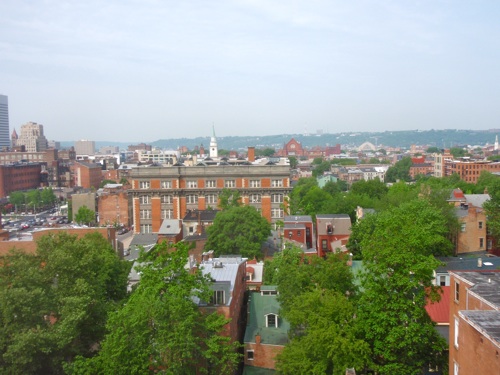The main trunk of the elm measures about 14’6″ long and 4′ in diameterÂ
I love reconnecting with old friends, especially when it involves consulting on the fate of a large tree. I first learned of my friend John’s elm when I posted his images and text as part of my Archive of Old Trees about four years ago. We’ve kept in touch via facebook and email since then, and have been looking for an opportunity to get together. I was sad to learn of the tree’s recent demise – John posted images of large branches shearing off exposing rot – so I suggested he consider bringing the logs to a mill to make good use of the wood.
John acted immediately and before I knew it I was boarding a flight to Chicago to meet with the mill guys and strategize with John about what to do with the wood. I urged John to keep the main trunk as long as possible, considering the age of the tree (about 200 years) and potential for clear, tight-grained and figured wood. We spent an afternoon at Horigan Urban Forest Products surveying the logs, consisting of the main trunk at 14′ 6″ x 4′ diameter, and several large branches, some with interesting contours and crotches. Given the limitations of the mill’s portable woodmizer and the properties of American elm, the logs obviated a cutting program that will yield about 2000 board feet of mixed width 4/4, 5/4, 6/4 and 8/4 lumber.
John and I spent the remaining weekend catching up, playing music, visiting old friends and devising a project. We decided to invite a network of designers, artists and woodworkers to make things with the elm, culminating in an exhibition and/or website. The things made will then branch out into the world like branches of a tree. We’re calling the project Arborigin and have secured the domain name arborigin.com as a placeholder. We have about three months to develope Arborigin into a feasible project while the wood cures, so stay tuned, and send a note if you’d like to be involved (scott@deepcraft.org).
Original Plat of Survey from 1897; note the elm at 2’d



















